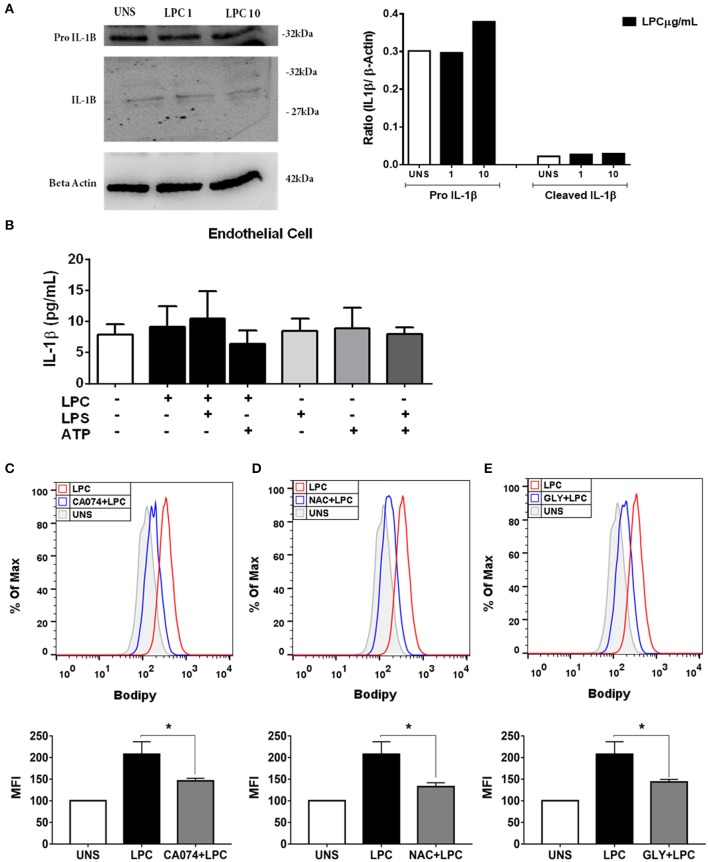Figure 5.
Lysophosphatidylcholine (LPC) induces foam cell formation mediated by an inflammasome-dependent pathway in human endothelial cells. Human endothelial cells were stimulated with 1 and 10 μg/ml of LPC. After 24 h, the protein levels of (A) pro–IL-1β and IL-1β in the supernatants or cell lysates were examined by western blot analysis. Beta actin was used as an internal control. Human endothelial cells (B) were pretreated with LPS (500 ng/ml) 4 h before treatment with 1 μg of LPC for 24 h. After this time, the cells were treated with ATP (1 mM). One hour later, the supernatants were collected, and the levels of IL-1β were measured by ELISAs. The bar graph represents one experiment performed twice in triplicate. In addition, human endothelial cells were pretreated with different inhibitors: (C) cathepsin B inhibitor (CA-074), (D) reactive oxygen species (ROS) inhibitor (N-acetyl-l-cysteine [NAC]), and (E) inhibitor of potassium efflux [glibenclamide (GLY)] for 1 h and stimulated with 1 μg of LPC for 24 h. Lipid droplets were stained with BODIPY and analyzed by flow cytometry. Histograms are representatives of three independent experiments. Each bar graphic represents the mean fluorescence intensity (MFI), and bars show significant differences and represent the 95% confidence interval (*p < 0.05) of the cells stimulated with LPC or UNS (unstimulated cells).

